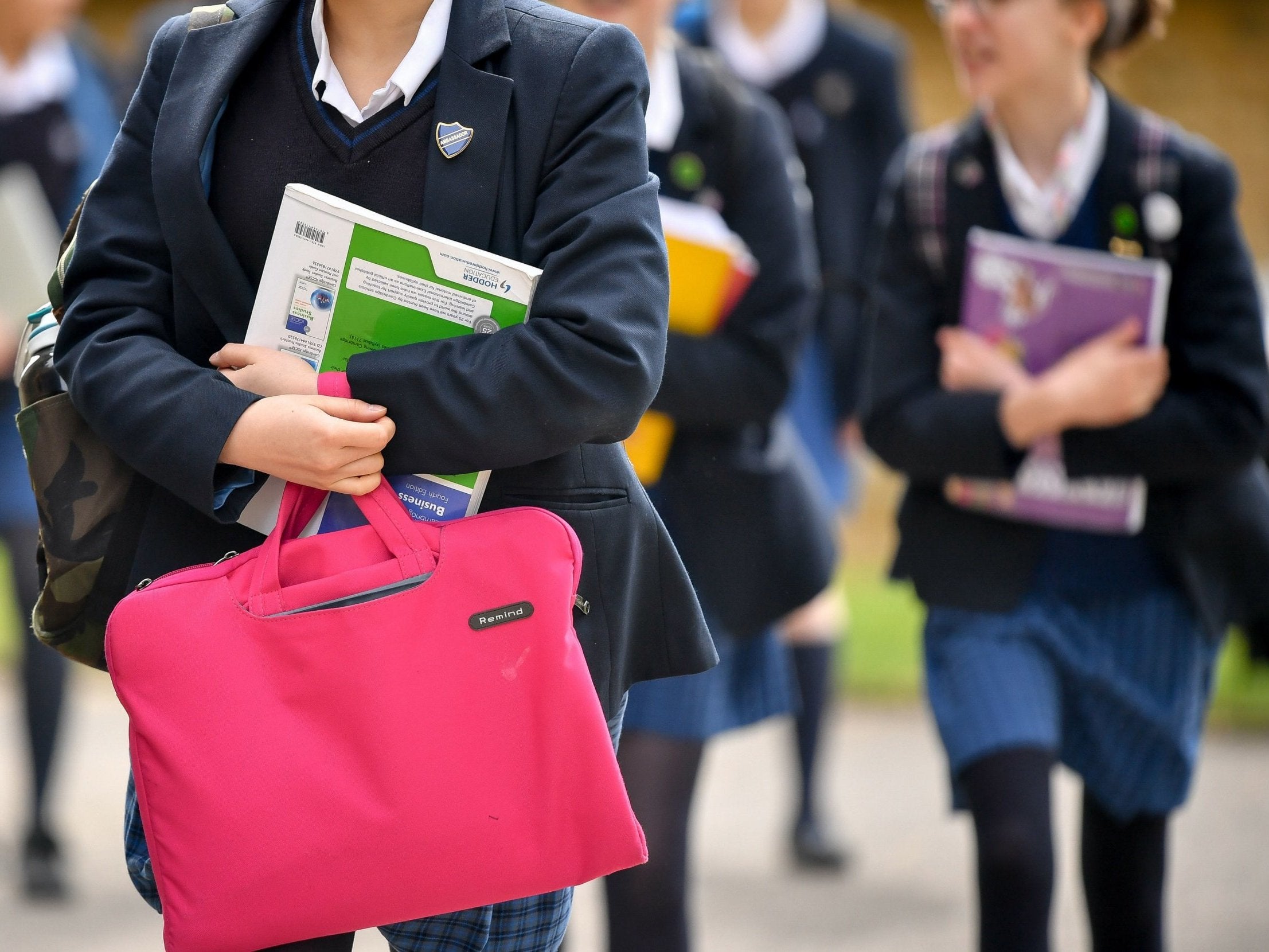Number of ‘super-sized’ classes in secondary schools to rise leaving parents ‘enraged’, union warns
Funding pressures will expand classes in secondary schools, National Education Union says

A surge in the number of secondary school pupils in “super-sized classes” is on the horizon amid funding cuts – and it will “enrage” parents, a leader of the largest education union has warned.
Kevin Courtney, joint general secretary of the National Education Union (NEU), has predicted secondary school class sizes will reach a “40-year high”, with more pupils in classes of 31 or above.
The warning comes at a time when secondary schools have been forced to increase class sizes in England after budget pressures led to staff cuts despite the fact pupil numbers in secondary schools are increasing.
Speaking at the union’s annual conference in Liverpool, Mr Courtney said: “This represents a real problem in our schools, it presents a real problem for our members as well as their pupils.
“It is a real problem that the government has seen coming for 11 years. It is a real problem it hasn’t dealt with.”
The average class size in secondary schools in England last year was 21.2 pupils, compared with 20.8 in 2017.
Meanwhile, the percentage of pupils in classes with 31 pupils or more in secondary schools rose from 11.5 per cent in 2017 to 12.1 per cent last year, official statistics show.
Mr Courtney warned the rise in “super-sized” classes comes at a time when there is a growing number of teachers in secondary schools teaching subjects they have not trained in.
He showed delegates slides that suggested the number of secondary school children in classes of 31-plus pupils was about to go above the equivalent number in primary schools, which he described as “unprecedented”.
Mr Courtney added: “We are about to see a significant increase in the number of secondary school children in super-sized classes. My prediction is that this will enrage parents.
“The government can keep repeating its lines about more funding than ever before – but what’s happening to class sizes will give the lie to that.”
Addressing hundreds of NEU members on Thursday, Mr Courtney called on teachers to mobilise parents to campaign about school and further education funding ahead of the local elections.
He added that they should “ramp it up” even more in the event of a general election to keep it at the top of the political agenda.
He told the audience: “We don’t tell people who to vote for but we do say, ‘Vote for education’.”
Mr Courtney said he believed the next election would “be fought on education”, and added that school and college funding is “an issue that will not go away” for this government.
He said: “No politician in this country can safely ignore the fact that three-quarters of a million people changed their vote in the 2017 general election because of school funding.”
Figures released by the Department for Education (DfE) showed there were 3,165,878 students of secondary school age in 2017-18, but the number is set to jump by more than half a million by 2024-25.
The data also showed the proportion of state schools that are overcapacity has fallen. Fifteen per cent of secondary schools had pupil numbers at or overcapacity in 2018, down from 16 per cent in 2017.
A DfE spokesperson said: “This Government is undertaking the biggest expansion in school places in two generations – and recent statistics show we are well on track to create one million places nationwide in the decade to 2020 - reversing a reduction of 100,000 school places between 2004 and 2010.
“On top of this, standards are rising; the attainment gap between disadvantaged students and their more affluent peers has narrowed since 2011; the proportion of pupils in good or outstanding schools has increased since 2010; and our primary school children have achieved their highest ever score on international reading tests. This means that more families have the choice of a good school place for their children.”
Subscribe to Independent Premium to bookmark this article
Want to bookmark your favourite articles and stories to read or reference later? Start your Independent Premium subscription today.

Join our commenting forum
Join thought-provoking conversations, follow other Independent readers and see their replies